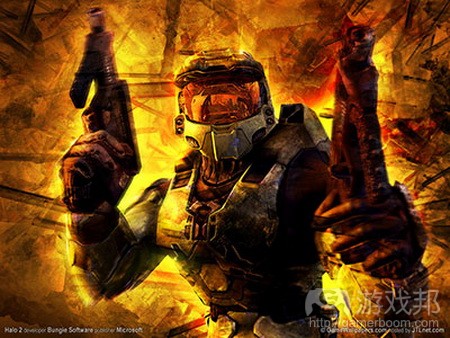布瑞斯韦特对立观点:社交游戏进程设计并非游戏
游戏邦注:本文作者为seppo,文章主要反驳设计师布瑞斯韦特之前发表的游戏设计是种游戏的观点。
如果用一句话总结布瑞斯韦特的观点,那就是社交游戏执行和用户反馈间的反馈循环很短,设计师调整设计就好比玩一回合《星际争霸》。
听到此类言论,我负面情绪油然而生,我花了1、2天时间慢慢揣摩是什么原因促使我如此生气,我确实非常生气。
首先,我先声明,布瑞斯韦特和她文中提到的很多人物,从约翰·罗梅洛,到史帝分·马瑞察克,再到布赖恩·雷诺兹都是游戏行业经验丰富人士,他们所创作的作品都令我十分钦佩。
但我并不认同这篇文章的观点,我仔细思考了其中原因。文章曾引用Don Daglow的一段话:
Don Daglow是另一游戏设计元老,通常以将领视角观察数据。他表示,社交游戏设计很特别,因为你每天都能获得各方面表现状况的反馈。就像高速运转的SEO(游戏邦注:即搜索引擎优化)。最近辅助功能调整之后,有多少初次玩家重返游戏?游戏DAU如何?调整价位之后,营收有何变化?测试员是否喜欢新元素?所有商业活动都是游戏,但社交游戏业务到处都设有24小时排行榜。”
读懂没?Daglow一针见血道出区别所在。社交游戏业务是种游戏。各种参数反馈(游戏邦注:如 DAU、MAU、用户粘性、ARPU、DARPA和NAMBLA)提供即时信息,促使社交游戏灵活运作,然而我们并未将这些信息应用至游戏制作当中。
通常游戏发行后,公司都能在前1、2个月的销售期获得目标群体反馈信息,游戏或成功或失败,反馈信息或多或少。社交游戏能够提供很多用户体验行为反馈信息。公司可以获悉玩家是否体验更久,是否聊天更多、消费更多,是否退出,是否回访,是否同好友分享动态……从中我们可以判断玩家有没有收获更多乐趣。
但我认为将游戏设计视作游戏的主要问题是过于简单化,二者就好比读书同写作之间的区别,或者更准确地说,像是体验《星际争霸》和制作《星际争霸》之间的差异。
我知道布瑞斯韦特想要表达的是我们已经开始上升至新阶段:体验游戏和制作游戏已变成一回事,但我并不这么认为,游戏就是很好说明。
我的意思是,不妨看看《Ravenwood Fair》、《Frontierville》、《Social City》和《Cityville》。我认为以玩家角度来看,这个观点最大的问题是玩家玩《星际争霸》,但是他们并没有参与其中制作。
游戏设计师的设计工作就是制作系列供玩家互动的机制系统。系统设计直接影响玩家行为。玩家不会把《Halo》体验视作人类同Covenant在世俗世界的模拟社交互动。如果玩家这么认为,无疑就会在游戏中丧命,输掉游戏。系统促使玩家学习厮杀(游戏邦注:但并非随意屠杀),玩家学习如何保持健康,使用盾牌,留心侧面袭击,合理选择武器和弹药。虽然玩家在系统中享有很多自由,但他们显然也受此约束。玩家不会以竞争心态体验《Halo》,然后靠缓慢前行就获胜。
通过思考游戏设计是种游戏观点,我们会发现设计师是在束缚中展开设计游戏。如果你“最大程度优化游戏功能”,获得最高积分,那么未来就会继续以相同方式优化其他功能,参照同样的参数。刚开始设计的是《Farmville》,随后通过“体验”《Farmville》设计游戏获得最高程度优化版本,因为这是“理想”的体验方式。
现在我们把这个观点同社交游戏业务是种游戏观点,或者是同游戏开发业务是种游戏观点进行比较,我认为设计师玩家是在进行优化工作,追踪数据,跟进反馈信息(游戏邦注:这些都是颇令人兴奋的内容)。
坦白说,我希望这是布瑞斯韦特陈述的观点,而我不过是加以诠释。但问题是实践出真知,所以获知设计师如何设计游戏的途径是亲自体验游戏。当出现克隆作品相互较量的局面时,我们就会觉得大家都在体验同样的游戏,毫无故事情节可言。
我们的目标?让我换个角度。我们可以认为这是诠释游戏制作理念的新方式,所以我们能够快速分析成功或失败功能,看看大家是否重视古怪因素或者是否享受其中。但我们不会忘记我们所制作的艺术作品,我们需要对玩家、对自己负责,创造具有进步意义的作品。(本文为游戏邦/gamerboom.com编译,如需转载请联系:游戏邦)
Game Design is not a Game
By seppo
This post is a response to a post by Brenda Brathwaite on Inside Social Games you can find here.
Go read the article. If you want a one-sentence summary, basically, it’s that with social games, the feedback loop between implementation & user response is so short that you can essentially iterate on design like you’re playing a round of Starcraft.
Sometimes when I read something like this, I have a really viscerally negative reaction, and it often takes a day or two of digestion to figure out specifically what about it rubs me the wrong way – and this really, really rubbed me the wrong way.
First, just to throw it out there, Brenda Brathwaite, the author, and a lot of the people she quotes, from John Romero, to Steve Meretzky, to Brian Reynolds are people who have tons of experience in all kinds of game design, who have created works I highly, highly respect.
But I had a really negative reaction to this article, and it took me a while to figure out why. It’s contained simply in a single word in a quote from Don Daglow:
Don Daglow, another veteran game designer, watches the numbers like a general. Social game design is unique,he says, because you get a score for every facet of your performance every day. It’s like SEO on speed. How many first-time players came back the next day after the latest tutorial tweaks? What’s our DAU? How is monetization changing since we adjusted item prices? Did the test players like the new gorilla suit costume? All of business is a game, but the social games business has 24-hour scoreboards on every corner.
Catch that? Mr. Daglow nails the distinction on the head. The social games business is a game. The feedback on all kinds of metrics, DAU, MAU, Stickiness, ARPU, DARPA, NAMBLA, etc. give the business aspect of running a live social game the kind of real-time feedback that we’re really not used to having on the business side of making games.
Usually, you put out a game, you get some feedback from focus groups, and in a month or two worth of sales, you either succeed or fail and that’s more or less all the feedback you’d get. With social games, you can tell from one day to the next all kinds of things about how a player’s played. You can find out whether they were online longer, chatted more, spent more, quit, came back, told a friend, etc. etc. And somewhere in all that, there’s probably a way to tell if a player’s had more fun.
But I think the fundamental problem with viewing game design as a game is quite simple, and it’s essentially the difference between reading a book & writing it… or more aptly, playing a game of Starcraft and making Starcraft.
And I get that the point that Brathwaite is trying to make is that we’ve gotten to a point where playing the game and making the game are the same, but I just don’t think that’s the case – and it shows in the games.
I mean, look at Ravenwood Fair, and look at Frontierville. Look at Social City and Cityville. I think that to me as a player, the fundamental problem with “Social Games” is that everyone’s playing Starcraft, and no one’s making it.
When a game designer designs a game, they create a system of mechanics that a player interacts with. The design of that system influences how players behave. You’re not going to play Halo as a casual simulation of mundane social interactions between the humans and the Covenant. If you do that, you’ll be killed, and you’ll lose. You’re encouraged by the systems to learn to kill – but not just in any random killing – you learn to manage your health, and shields – to watch for flanking routes, to manage your weapon selection and ammo. And while the player’s given a lot of freedom within those systems, they’re absolutely constrained by them. You won’t play Halo competitively and win by walking really slowly.
And I think that that’s what you get when you see game design as a game – you play within the constraints. If you’re playing to maximize your stats while you’re “improv(ing) the best of their games’ features,” then you’ll optimize those features in exactly the same way, looking at exactly the same parameters. You start with Farmville, and you end with a hyper-optimized Farmville by “playing” the Farmville game design game, because that’s the “optimal” way of playing.
Now, contrast that with the view that the business of Social Games, or even that the business of game development is a game, and I think that you take the optimization, the stat tracking, and the constant firehose of feedback and data, and you’re talking about something that’s really genuinely exciting.
And honestly, I’d like to hope that that’s the point that Brathwaite’s making and that I’m just interpreting it in a sort of obtuse fashion. But the problem is that the proof of the pudding is in the eating, and in this case, the proof of how people are designing games is in the games. And when you’ve got clones cannibalizing clones, it really does feel like everyone’s playing the same game, and has basically lost the plot.
Our goal? Let’s make something new. Let’s say, okay, here’s this new way of understanding the business of making games – so we can analyze successful or failed features faster, so that we can take something weird and unruly and strange and understand whether people value it, or are having fun with it. But we’re not going to lose sight of the fact that what we’re making is art, and we do have a responsibility, both to our players and to ourselves, to make something that moves things forward. (Source:selfawaregames)
上一篇:推动社交游戏病毒式传播的5大要素
下一篇:传统休闲游戏元素丰富社交游戏内容









































 闽公网安备35020302001549号
闽公网安备35020302001549号